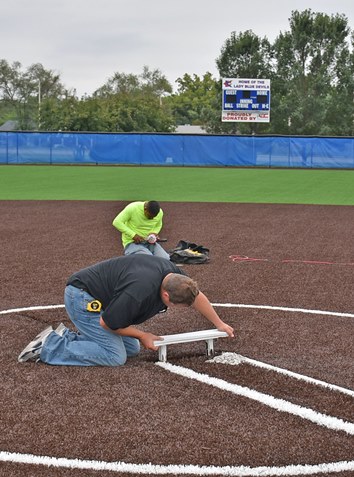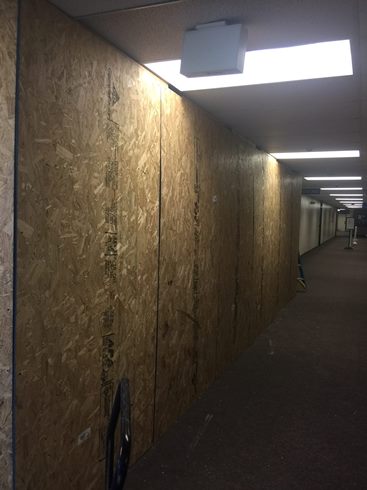by Sam Zeff, KCUR
This story is part of a 2016 Kansas elections collaboration involving the KHI News Service, KCUR, KMUW, Kansas Public Radio and High Plains Public Radio.
Primary election night was brutal for conservative Republicans in the Kansas Legislature.
Six Republican members of the Senate lost their primaries. The more moderate candidates won two additional seats left open by conservatives who decided not to run for re-election.
Eight Republican House members were ousted in the primaries. The Kansas Chamber of Commerce, which has been known to back lawmakers who align with Gov. Sam Brownback on tax policy, had endorsed all of those defeated incumbents. Eight others the Chamber endorsed in 13 open House races also lost.
A KCUR analysis shows there are still plenty of races where Democrats will be competitive in the fall, and that means the possibility of more conservatives going down to defeat.
“I don’t see any way conservatives can continue with a working majority in the Kansas House starting in 2017,” said Republican Rep. John Rubin, a conservative from Shawnee who retired after this year’s legislative session.
While Rubin said he’s not sure about the makeup of the 2017 Senate right now, the KCUR analysis shows at least 10 Senate seats and at least 20 House seats are up for grabs.
How did KCUR decide which races are competitive? They met one or more of these criteria:
• The candidate from the challenging party (almost exclusively Democrats running in Republican-held districts) has at least $10,000 cash on hand from the close of the last reporting period that ran from Jan. 1 to July 21. Having that much in the bank means there’s enough money to print yard signs and palm cards and mail a postcard.
• None of the candidates has $10,000, but the challenging party’s candidate has more money.
• It is a Republican-held district where Democrat Paul Davis won in the 2014 race for governor. Where Davis did well, a Republican is vulnerable. (A Democrat-held district where Brownback won also would be considered competitive).
• It is a district where Brownback had a small margin of victory. If he won by 50 percent or less, a Democrat has a chance.
Patrick Miller, a political science professor at University of Kansas, said there’s no doubt conservatives will lose more ground in the Legislature after the Nov. 8 general election.
“If the public is going to send a message of rejection against the governor and his policies, that’s really a two-step process” he said. The primary election “for moderate Republicans, November for Democrats.”
The question, of course, is how many Democrats will win.
Two Senate races to watch
There are a couple of Senate races in northeast Kansas to keep an eye on where if Republicans lose, it might be the start of a long election night for conservatives.
One is the Senate District 10 seat held by Mary Pilcher-Cook from Shawnee. Pilcher-Cook is well-known, elected to three terms in the House before winning her Senate seat in 2008 and had $55,684 in the bank in the last report. But Brownback won the district with only 49 percent of the vote two years ago.
While Pilcher-Cook’s challenger, Vicki Hiatt, barely makes the money threshold (she had $10,653 in the bank) observers believe she has led an active campaign in a swing district that could go blue. Hiatt is a retired teacher in a year it appears voters are highly interested in education.
The other Senate bellwether is District 5 in Leavenworth County where incumbent Republican Steve Fitzgerald faces tough general election opposition from Democrat Bill Hutton, a lawyer and municipal judge.
Fitzgerald took office with other conservatives four years ago by beating Democrat Kelly Kultala by just 763 votes out of nearly 25,000 cast. Davis won the district two years ago with 49 percent of the vote, so it’s clearly swing. While Fitzgerald has raised a lot of money ($55,577 cash on hand), Hutton is keeping pace ($41,017 cash on hand).
Two House races to watch
In Lenexa, Amanda Grosserode is the two-term incumbent representing House District 16. She starting turning heads in 2009 when she organized a protest against the federal stimulus program at the office of then Democratic Congressman Dennis Moore.
It’s still a swing district, where Davis won 50.5 percent of the vote in 2014 to Brownback’s 47 percent. Now Grosserode, tea party organizer and homeschooler, is up against Cindy Holscher, a PTA mom and Sprint Yellow Pages executive.
Holscher has the endorsement of Stand UP Blue Valley, the Johnson County pro-public schools group that downed several conservatives in the primaries. And Holscher (with $25,319) was ahead of Grosserode (with $15,437) in cash on hand at the end of July.
Meanwhile, if there’s a proving ground for how well-organized Democrats are, it could be House District 51, which covers a slice of rural Kansas between Topeka and Manhattan.
At first glance, the district appears pretty solidly red. Davis only got 36 percent of the vote here in the 2014. But at the same time, Brownback didn’t hit the 50 percent threshold.
The incumbent, Rep. Ron Highland, chairman of the House Education Committee, has been in the Brownback camp. The Democratic challenger, Adrienne Olejnik, is a Rossville City Council member. She announced in October and has been actively campaigning ever since. And she’s raised more money than Highland ($14,818 cash on hand to his $11,555).
Six districts could go blue
While moderates did score huge victories in the primaries, several have more to overcome in the general. The KCUR analysis shows three Senate seats and three House seats already picked up by moderates are still competitive based on how much money the candidates have and votes for governor in 2014.
One to watch is Senate District 21 in Overland Park where Dinah Sykes faces Democrat Logan Heley. Sykes handily beat incumbent Sen. Greg Smith. But Heley, with $44,012, has raised nearly twice as much money as Sykes ($26,122) in a district Brownback lost two years ago.
The X factors
There are other factors, of course.
Is a candidate going door-to-door? Appearing at events in the district? That can make up for less money.
The Democratic Party hasn’t done too well in the last couple of Kansas elections. Though it has done better fielding candidates this time, with a Democrat running in all 40 Senate districts, many are placeholders without serious campaigns.
Will Brownback’s approval rating continue to hover below 20 percent, and will that be a drag on conservatives running for re-election? The governor insists the ousting of so many conservatives during the primary was not a repudiation of his policies.
Rubin said that can’t be true. “I think you’d have to be, frankly, in a state of denial to not recognize that the governor’s policies — again, those that I agree with and those that I don’t — but the governor’s policies were front and center in many of those races,” he said.
And then there’s the Donald Trump factor. Nobody knows what having him at the top of the ticket will mean. Will Republicans, especially in Johnson County, stay home? Will it energize Democrats? Will it galvanize some who haven’t voted in recent elections?
“If you have a race that is decided by a couple of percentage points where literally, probably, everything that happens matters because the race is so close, then Trump could have an effect,” Miller said.
— Sam Zeff is co-host of the political podcast Statehouse Blend and covers education for KCUR. Kansas Elections Editor Amy Jeffries contributed to this report.
The nonprofit KHI News Service is an editorially independent initiative of the Kansas Health Institute and a partner in the Heartland Health Monitor reporting collaboration. All stories and photos may be republished at no cost with proper attribution and a link back to KHI.org when a story is reposted online.
– See more at http://www.khi.org/news/article/the-losing-may-not-be-over-for-conservatives-in-kansas-legislative-election#sthash.mgF8K94J.dpuf



